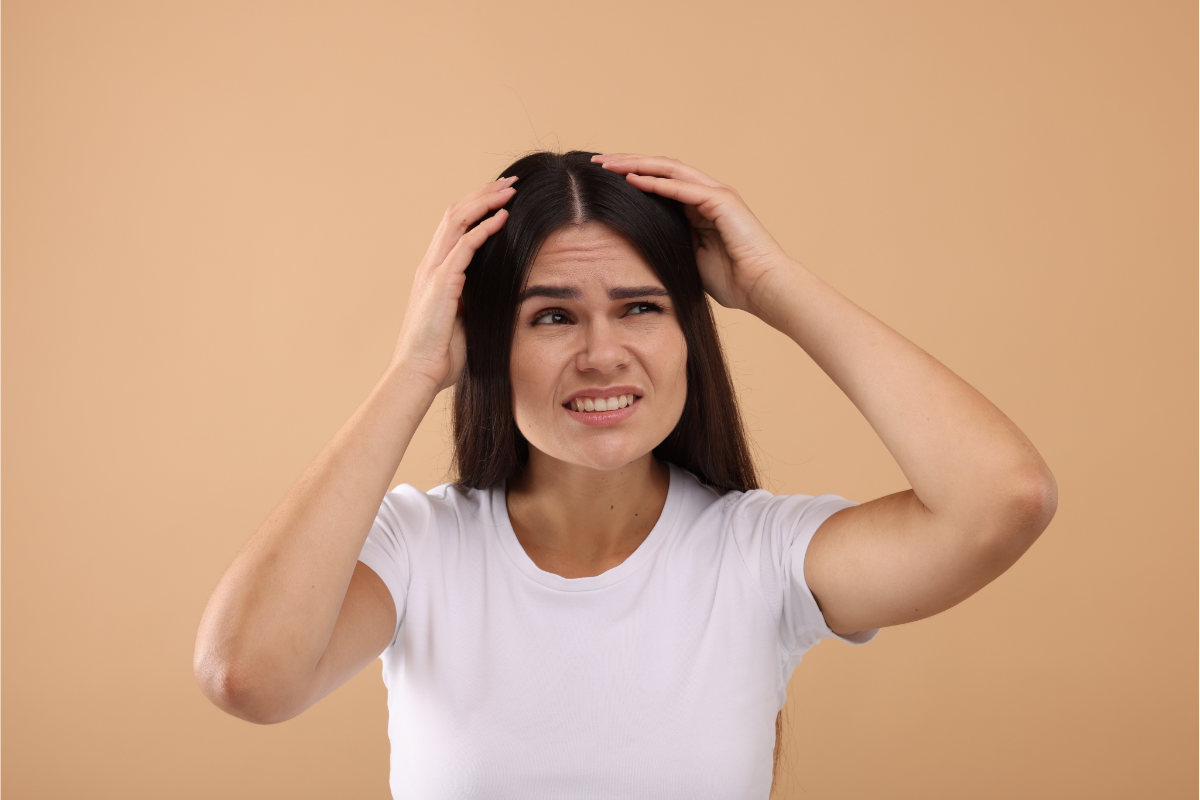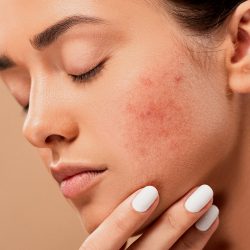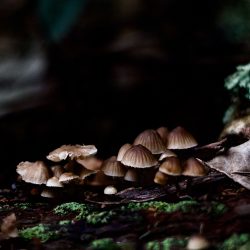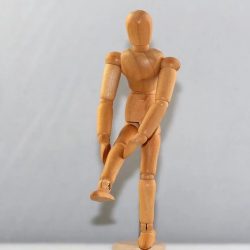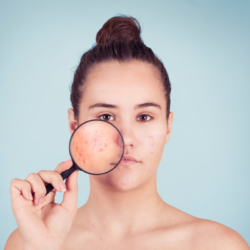Dandruff, a term that often conjures up images of discomfort and embarrassment, deserves special attention. In this introduction, we’ll define exactly what dandruff is, examine its prevalence and highlight why it’s crucial to treat it effectively.
Where does dandruff come from?
Dandruff, scientifically known as pityriasis simplex capillitii, is dead flakes of skin that fall off the scalp. These flakes, generally white or greyish, may be fine and dry or slightly oily. Often confused with simple dryness of the scalp, dandruff is actually a symptom of a more complex condition involving accelerated regeneration of scalp skin cells. It can be associated with a variety of conditions, such as seborrhoeic dermatitis, a fungal infection or psoriasis.
Prevalence of dandruff
The prevalence of dandruff is surprisingly high. Studies estimate that up to 50% of the adult population may suffer from it at some point in their lives. It affects all age groups, both sexes and all hair types. Despite its widespread occurrence, the subject sometimes remains taboo, which can lead to delays in treatment or in seeking help.
The importance of treating dandruff
Treating dandruff is not just a cosmetic issue. Dandruff can cause itching and irritation, and contribute to low self-esteem and psychological well-being. It can also be a sign of other scalp health problems that need attention. Early and effective treatment of dandruff is therefore essential to maintain good scalp health, avoid complications and improve quality of life.
why do I have dandruff?
Understanding the causes of dandruff is essential to identifying effective treatments. In the scalp, as in the rest of the body, skin cells multiply in response to the body’s needs, then die and shed. When accelerated, this cell renewal can lead to dandruff, a phenomenon in which scalp cells renew themselves more rapidly than usual.
Seborrhoeic dermatitis is often the main cause of dandruff. This condition makes the skin oily, red and flaky. The white or yellowish scales fall off, forming dandruff. Although this condition can affect any area with sebaceous glands (eyebrows, groin, armpits, chest, back, ears and around the nose), it is particularly common on the scalp. In infants, it is known as “milk crust”.
A fungus called Malassezia, naturally present on the scalp, can also be a trigger for dandruff. Excessive proliferation of this fungus causes an accelerated multiplication of skin cells.
Several factors can encourage this proliferation of Malassezia, including :
- Age
- Hormones
- Stress
- Underlying medical problems and nutritional deficiencies
It’s important to note that while hair dirt doesn’t directly cause dandruff, insufficient washing can contribute to the build-up of sebum and, consequently, the appearance of flakes.
Malassezia, what?
Malassezia is a genus of yeast-like fungi, characterised by its lipophilic nature and typical commensal behaviour. Naturally present on the skin of many mammals, including humans, it plays an important role in the skin ecosystem.
These fungi feed on lipids present on the surface of the skin, hence their preference for areas rich in sebaceous glands, such as the scalp, face and upper back. Although Malassezia is generally harmless and part of the normal skin flora, it can sometimes cause or aggravate certain dermatological conditions, including dandruff, seborrhoeic dermatitis and pityriasis versicolor.
Malassezia species are characterised by their ability to cause rapid proliferation of skin cells, leading to excessive desquamation and the formation of dandruff. Symptoms associated with Malassezia overgrowth include itching, redness and inflammation of the scalp.
Management of Malassezia-related conditions often involves the use of topical antifungal treatments, such as medicated shampoos containing ketoconazole, salicylic acid or zinc pyrithione. These treatments aim to reduce the Malassezia population on the scalp and restore the skin’s natural balance.
Dandruff or seborrhoeic dermatitis: what are the differences?
Correctly identifying dandruff is a fundamental step in choosing the right treatment. In this section, we’ll look at ways of recognising dandruff and differentiating it from other scalp conditions.
How to recognise dandruff
Dandruff generally appears as white or yellowish flakes that come off the scalp. These particles can spread to the shoulders, particularly visible on dark clothing. Another common symptom is itchy scalp. However, it is important to note that dandruff can occur without itching. The presence of dandruff is often more pronounced under conditions of stress or climatic changes.
Differentiating dandruff from other scalp problems
It’s crucial to distinguish dandruff from other scalp conditions. For example, seborrhoeic dermatitis is also characterised by flakes, but these are often accompanied by more severe redness and irritation. Scalp psoriasis, on the other hand, presents with noticeably thick patches and silvery flakes. Similarly, a fungal infection can mimic the appearance of dandruff, but is often associated with signs of inflammation and more pronounced lesions. A medical consultation is recommended for an accurate diagnosis, especially if symptoms are severe or persist despite self-treatment.
Conventional treatments for dandruff
Managing dandruff often involves the use of conventional treatments. This section focuses on medicated shampoos and topical treatments, two common and effective approaches.
Shampoos
Medicated shampoos play a crucial role in the treatment of dandruff. They contain specific active ingredients that target the causes and symptoms of dandruff. Key ingredients include :
- Zinc pyrithione: Effective against the Malassezia fungus, it also reduces inflammation.
- Coal tar: Useful for slowing down cell renewal, it is particularly effective in cases of seborrhoeic dermatitis.
- Salicylic acid: Helps to eliminate dead skin cells and reduce the build-up of flakes.
- Ketoconazole: A powerful antifungal, often used when other treatments have not been effective.
It is important to follow the instructions for use of these shampoos, as their frequency and method of application may vary. In addition, some may be better suited to certain scalp conditions than others.
Topical treatments
In addition to shampoos, topical treatments are another option. These products are applied directly to the scalp and can include creams, lotions or solutions. Common active ingredients in these topical treatments include:
- Corticosteroids: Effective in reducing the inflammation and itching associated with some forms of dandruff.
- Moisturizers: Help maintain scalp moisture, preventing dryness and flaking.
These treatments can be particularly beneficial for those with sensitive skin or more severe symptoms. As with medicated shampoos, it is advisable to consult a healthcare professional for recommendations tailored to your specific situation.
Is tea tree essential oil effective in eliminating dandruff?
There is growing interest in using tea tree oil to treat dandruff. Let’s take a closer look at its effectiveness and mode of action.
Antifungal and antibacterial properties
Tea tree oil is renowned for its powerful antifungal and antibacterial properties. These characteristics make it a potentially effective remedy against dandruff, especially in cases where it is caused or exacerbated by microbes such as the Malassezia fungus. By targeting these micro-organisms, tea tree oil helps to reduce the overproduction of skin cells and, consequently, the formation of dandruff.
Effects of tea tree oil on the scalp
In addition to its antimicrobial properties, tea tree oil is also appreciated for its soothing effect on the scalp. It can help reduce the itching and inflammation associated with dandruff, offering significant relief for irritated scalp sufferers.
How do I use tea tree essential oil to get rid of dandruff naturally?
Tea tree oil can be applied in a number of ways to treat dandruff, each of which requires specific precautions.
As a shampoo
For simple use, add one drop of Tea Tree essential oil to your usual dose of neutral shampoo. Massage the mixture carefully into the scalp, then rinse. This method should not be used for longer than three weeks. An allergy test is recommended 48 hours before first use, by applying a small amount of the oil to the crook of the elbow.
In synergy with other essential oils, create a personalised shampoo by mixing in a 50 ml bottle:
- 4 drops of Tea Tree essential oil
- 4 drops of Atlas Cedar essential oil
- 6 drops of True Lavender essential oil
- 2 drops of Palmarosa essential oil
Complete with neutral shampoo. Apply a dab of this mixture to the scalp, massage in, leave on for 2 to 3 minutes, then rinse thoroughly. This synergy is not recommended for pregnant and breast-feeding women, children under 6, people with low blood pressure or those with hormone-dependent diseases. Asthmatics should consult a doctor before use. A prior allergy test is also advisable.
In care
For direct use, mix 4 drops of Tea Tree essential oil with 20 drops each of Jojoba and Neem vegetable oils. Apply this mixture to the scalp, leave for 1 hour, then wash with a shampoo. This treatment can be repeated up to twice a week.
For a synergistic treatment, in a 10 ml tinted glass bottle, combine :
- 2 drops of Tea Tree essential oil
- 10 drops of Atlas Cedar essential oil
- 2 drops of Palmarosa essential oil
- 9 ml Jojoba vegetable oil
Massage this preparation into the scalp, leave for 1 hour and then shampoo. This operation can be repeated 1 or 2 times a week. As with the shampoo synergy, certain precautions and restrictions apply.
For each of these methods, it is crucial to carry out an allergy test before use and to follow the specific indications and contraindications for each synergy.
Sources
- Curr Top Med Chem. 2022; Promising Essential Oils/Plant Extracts in the Prevention and Treatment of Dandruff Pathogenesis
- Front Pharmacol. 2023; Efficacy and safety of Melaleuca alternifolia (tea tree) oil for human health-A systematic review of randomized controlled trials
- J Am Acad Dermatol. 2002 Dec;Treatment of dandruff with 5% tea tree oil shampoo

